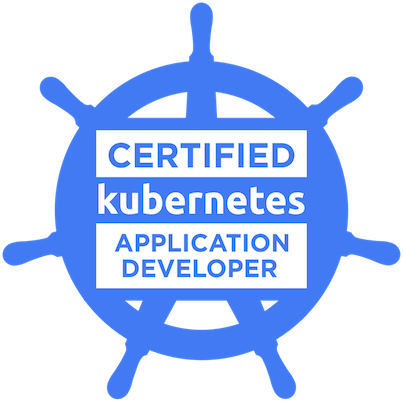

This four-day instructor-led class is designed to help IT professionals prepare for the Certified Kubernetes Application Developer (CKAD) exam.
This Track Includes:
Kubernetes for App Developers (LFD459) – 3 Days
Kubernetes for App Developers (LFD459)
Duration
3 Days
Description
Kubernetes is a high-velocity open source orchestration tool to deploy, scale, and update containerized applications. This course will teach you how to containerize, host, deploy, and configure an application in a multi-node cluster.
The topics covered are directly aligned with the knowledge domains tested by the Cloud Native Computing Foundation Certified Kubernetes Application Developer (CKAD) Program, and will substantially increase students’ ability to become certified.
Objectives
This course will teach you how to containerize, host, deploy, and configure an application in a multi-node cluster. Starting with a simple Python script, you will define application resources and use core primitives to build, monitor and troubleshoot scalable applications in Kubernetes. Working with network plugins, security and cloud storage, you will be exposed to many of the features needed to deploy an application in a production environment.
Course Outline
1. Introduction
- Objectives
- Who You Are
- The Linux Foundation
- Linux Foundation Training
- Certification Programs and Digital Badging
- Preparing Your System
- Course Registration
- Labs
2. Kubernetes Architecture
- What Is Kubernetes?
- Components of Kubernetes
- Challenges
- The Borg Heritage
- Kubernetes Architecture
- Terminology
- Master Node
- Minion (Worker) Nodes
- Pods
- Services
- Controllers / Operators
- Single IP per Pod
- Networking Setup
- CNI Network Configuration File
- Pod-to-Pod Communication
- Cloud Native Computing Foundation
- Resource Recommendations
- Labs
3. Build
- Container Options
- Containerizing an Application
- Creating the Dockerfile
- Hosting a Local Repository
- Creating a Deployment
- Running Commands in a Container
- Multi-Container Pod
- readinessProbe
- livenessProbe
- Testing
- Labs
4. Design
- Traditional Applications: Considerations
- Decoupled Resources
- Transience
- Flexible Framework
- Managing Resource Usage
- Using Label Selectors
- Multi-Container Pods
- Sidecar Container
- Adapter Container
- Ambassador
- Points to Ponder
- Jobs
- Labs
5. Deployment Configuration
- Volumes Overview
- Introducing Volumes
- Volume Spec
- Volume Types
- Shared Volume Example
- Persistent Volumes and Claims
- Persistent Volume
- Persistent Volume Claim
- Dynamic Provisioning
- Secrets
- Using Secrets via Environment Variables
- Mounting Secrets as Volumes
- Portable Data with ConfigMaps
- Using ConfigMaps
- Deployment Configuration Status
- Scaling and Rolling Updates
- Deployment Rollbacks
- Labs
6. Security
- Security Overview
- Accessing the API
- Authentication
- Authorization
- ABAC
- RBAC
- RBAC Process Overview
- Admission Controller
- Security Contexts
- Pod Security Policies
- Network Security Policies
- Network Security Policy Example
- Default Policy Example
- Labs
7. Exposing Applications
- Service Types
- Services Diagram
- Service Update Pattern
- Accessing an Application with a Service
- Service without a Selector
- ClusterIP
- NodePort
- LoadBalancer
- ExternalName
- Ingress Resource
- Ingress Controller
- Service Mesh
- Labs
8. Troubleshooting
- Troubleshooting Overview
- Basic Troubleshooting Steps
- Ongoing (Constant) Change
- Basic Troubleshooting Flow: Pods
- Basic Troubleshooting Flow: Node and Security
- Basic Troubleshooting Flow: Agents
- Monitoring
- Logging Tools
- Monitoring Applications
- System and Agent Logs
- Conformance Testing
- More Resource
- Labs
9. Closing and Evaluation Survey
Audience
Experienced system administrators or network administrators
Prerequisties
To get the most out of this course, you should have basic Linux command line and file editing skills and be familiar with using a programming language (such as Python, Node.js, Go). A knowledge of Cloud Native application concepts and architectures (such as is taught in our free Introduction to Kubernetes edX MOOC) is helpful for this course.
Certification
Certified Kubernetes Application Developer (CKAD)
Below is a Course Schedule for this:
2024
| Jan | Feb | Mar | Apr | May | Jun |
|---|---|---|---|---|---|
| 17,18,19 | 21,22,23 | 20,21,22 | 24,25,26 | 29,30,31 | 26,27,28 |
| July | Aug | Sep | Oct | Nov | Dec |
|---|---|---|---|---|---|
| 10,11,12 | 14,15,16 | 18,19,20 | 16,17,18 | 13,14,15 | 11,12,13 |
Duration: 4 Days
Course Fee
| Course Fee | $2250.00 |
| SME (Company Sponsored) – All Singaporean and Permanent Resident Employee | NA |
| Singapore Citizens aged 40 years old and above | NA |
| Singapore Citizen and Permanent Resident aged 21 years old and above | NA |